The Energy Transition Market: Global Momentum and Canada’s Distinct Path
The Energy Transition market is at a pivotal moment. While recent political changes and shifting priorities in some countries have raised questions about the pace and visibility of the energy transition, the underlying global momentum remains strong. This article examines the current market state, highlights key technological and market trends, and explores the unique situation in Canada.
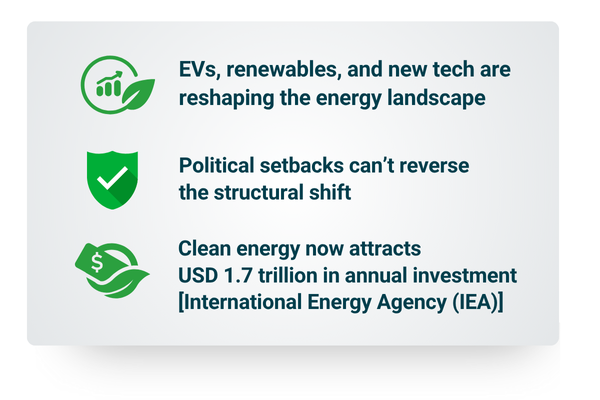
Global Developments in the Energy Transition Market
Recent political events, such as the return of Donald Trump to the U.S. presidency and his stated intention to reverse support for renewable energy and climate agreements, have led to speculation about the future of the energy transition, particularly in the United States. However, it is important to recognize that the energy transition is not solely dependent on government policy.
The market’s progression, built over the past two decades, is now so significant that it is unlikely to be fundamentally altered by short-term political changes.
The Impact of Electric Vehicle Adoption on Fossil Fuels
The global Automotive market is undergoing rapid change. In 2024, electric vehicles (EVs) accounted for about 17 million new car sales out of a global total of 77 million, representing a 22% market share and growing rapidly. The trend of the past few years in EV sales has, if anything, continued to increase in the first half of 2025, with global EV sales – in China and Europe in particular – continuing significant year-over-year growth.
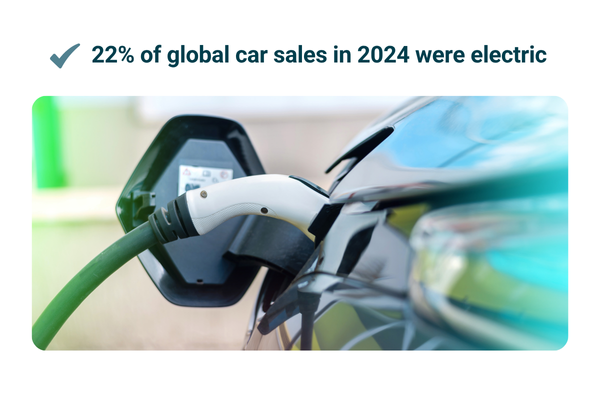
The most affordable EVs are now produced in China and are being sold across Asia, Africa, Latin America, the Caribbean, and increasingly in Europe. This shift is already having a long-term impact on petroleum demand, as the Transportation sector has traditionally consumed about 65% of all petroleum produced. With declining sales of gasoline and diesel vehicles, the future level of fossil fuel demand is uncertain and likely to decrease.
Renewable Energy Growth and Solar Photovoltaic Expansion
Solar photovoltaic (PV) facilities have become the cheapest form of electricity production in many regions, even without subsidies. In other parts of the world, wind power holds this distinction.
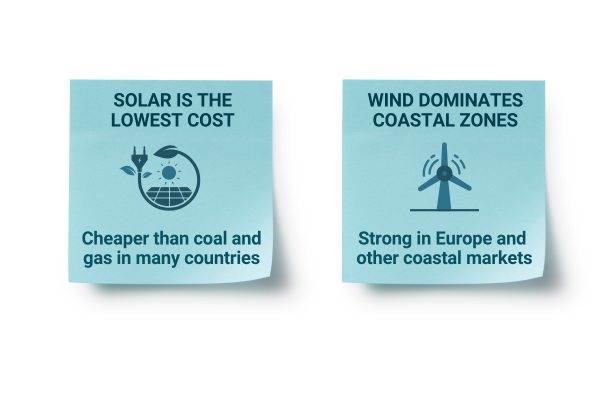
This economic reality is driving the construction of more renewable energy projects worldwide, regardless of political rhetoric or temporary policy shifts. The financial case for renewables is compelling and continues to drive market expansion.
Heat Pumps and Energy Efficiency
Air-to-air and air-to-water heat pumps are now the most cost-effective form of residential and small commercial heating and cooling in regions where winter temperatures remain above -5°C. While this does not apply broadly to Canada, it is relevant to most of the global population. The production of heat pumps is increasing rapidly, with expectations for continued double-digit growth through at least the end of the decade. These systems reduce reliance on natural gas, propane, and fuel oil for heating and improve cooling efficiency in warmer months.
Battery Technology Advancements and Energy Sector Innovation
Significant investments are being made worldwide in advanced battery technologies, including solid-state, lithium-sulfur, zinc, and graphene batteries. There is also substantial progress in the development of more efficient and powerful electric motors, such as magnet-free and axial flux designs, as well as in ultra-high reflectivity insulation materials and safer, more efficient nuclear technologies like small modular reactors (SMRs).
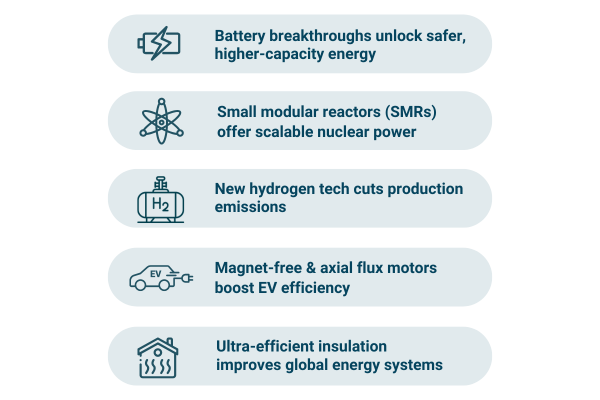
Cheaper hydrogen production methods - including biological, high-pressure electrolysis, and photoelectrochemical processes - are also attracting attention.
These technological advancements are leading to frequent announcements of breakthroughs and the emergence of new business models that are reshaping global energy generation and consumption.
Sustainable Energy Business Models and Clean Energy Investments
The ongoing innovation in technology and business models is resulting in the founding of new companies and approaches that are redefining the Energy sector. The transition away from fossil fuels toward electricity generated from non-emitting sources is continuing, and in some cases, accelerating compared to the past two decades.
The Inertia of the Energy Transition Market
The analogy of a “supertanker” is apt for describing the current state of the Energy Transition market. The global green economy, much like the fossil fuel economy of the past century, has grown so large and attracted so much capital that it has developed its own momentum. While political leaders may attempt to alter its course, the fundamental direction is unlikely to change significantly over a short period.
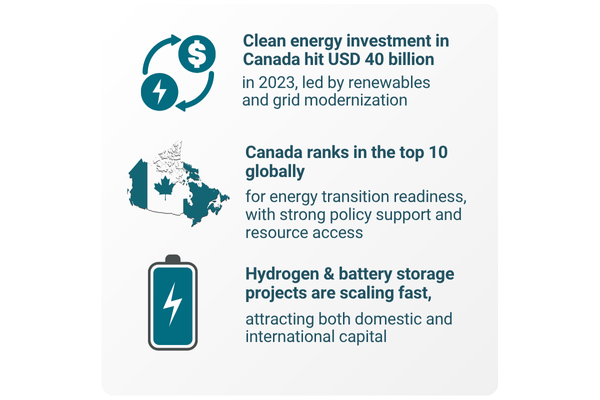
Canada’s Unique Situation in the Energy Transition
Canada faces a distinct set of circumstances within the global Energy Transition market. The federal consumer carbon tax has now been phased out, which has removed an important driver from many green energy projects, and there is significant momentum behind revitalizing the country’s export of fossil fuels by building new pipelines for natural gas and oil.
Despite this, on the domestic front a renewed federal government under the Liberal Party continues to be committed to green energy programs, including substantial tax credits and subsidies for new green energy developments.
At the same time, many provinces have plans in place to procure wind and solar power projects, invest in electric battery storage, and explore hydrogen or ammonia production for export, particularly to Europe. Construction is now commencing – with both provincial and federal government support – on the OECD’s first commercial Small Modular Reactor, which is expected to be the first of many new nuclear facilities to be built across the country.
In addition, there is widespread support for the expansion of electricity transmission and distribution infrastructure to facilitate electric vehicles and other electrification initiatives. Despite sharing the North American continent with the United States, which seems poised for an energy transition setback over the next few years, Canada is charting its own path on energy transition policy.
Climate Change and the Ongoing Need for Transition
Despite any temporary reduction in government action or shifts in public attention, CO2 emissions continue. Global CO2 atmospheric concentration continues to rise, global temperature rises, and the impacts of climate change such as heat waves, hurricanes, wildfires, droughts, and broader political and economic instability - are becoming more pronounced and costly.
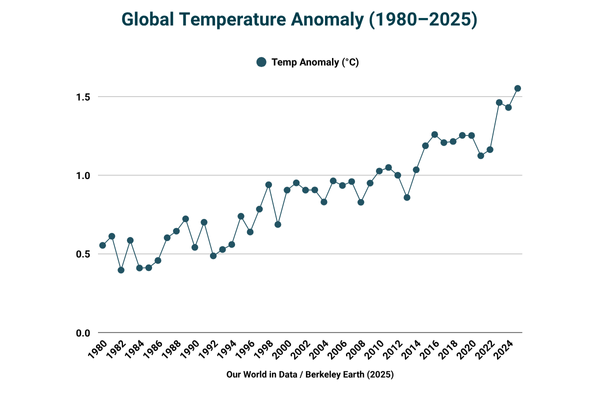
These rising costs highlight the urgent need for continued innovation and investment in clean energy solutions to help mitigate escalating risks to both economies and communities worldwide.
The Path Forward for the Energy Transition Market
The Energy Transition market remains resilient and dynamic, propelled by technological advances, market forces, and the growing recognition of the need for sustainable energy solutions. While political changes can influence the pace and visibility of the transition at the national or regional level, the overall direction is clear. Both globally and within Canada, there are significant opportunities for investment, innovation, and leadership in the evolving energy landscape.
